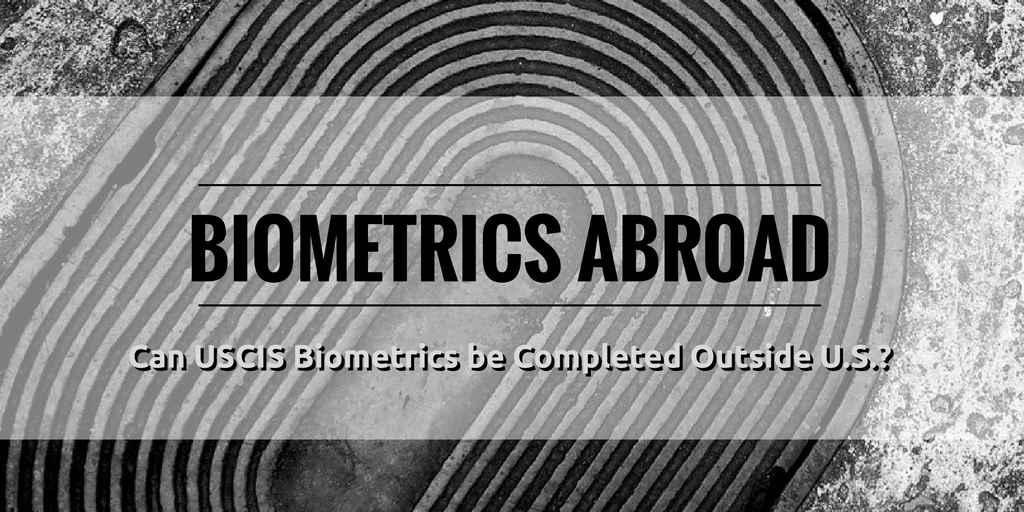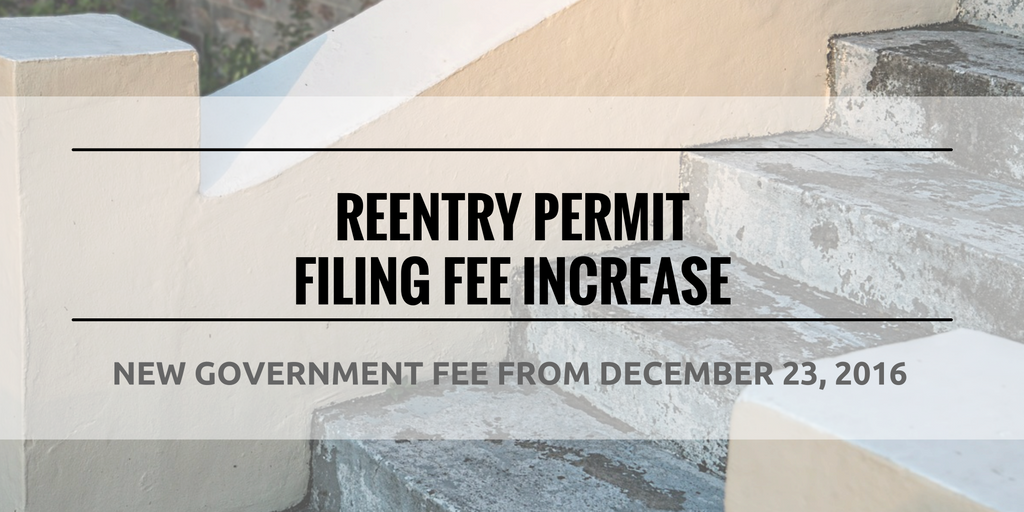I-131 Reentry Permits
What Is a Reentry Permit and Who Needs One?
A reentry permit is a permission from U.S. Citizenship and Immigration Service (USCIS) to a U.S. lawful permanent resident (LPR) or a conditional permanent resident to reenter the U.S. after an extended period of stay abroad.
In effect, the reentry permit protect a LPR’s green card from abandonment.
WHAT IS A REENTRY PERMIT (OR TRAVEL DOCUMENT)?
A reentry permit is a permission from U.S. Citizenship and Immigration Service (USCIS) to a U.S. lawful permanent resident (LPR) or a conditional permanent resident to reenter the U.S. after an extended period of stay abroad. Normally, LPRs are expected to reside in the U.S. on a permanent basis. However, in many circumstances, an LPR needs to travel frequently or to reside abroad for an extended period of time ranging from a few months to a few years and the reentry permit is the document which would allow its LPR holder to maintain their LPR status while spending time abroad. The actual reentry permit looks a bit like a U.S. passport – a booklet with a tamper-proof photo page with biographic information and a number of stamp pages.
Generally, a reentry permit can help prevent two types of problems: (a) your Permanent Resident Card (green card) becoming presumed abandoned if you are absent from the U.S. for one year or more during a single trip, or (b) your U.S. green card being presumed as abandoned for absences from the U.S. which are shorter than one year but when there is a pattern of spending extended periods of time outside of the U.S. (e.g. if you temporarily take up residence in another country).
In certain cases, LPRs who do not have a valid passport can obtain a reentry permit for international travel in lieu of a passport. A reentry permit establishes a presumption that its holder did not abandon their U.S. permanent residency, and it allows its holder to apply for admission to the U.S. after traveling abroad for a period of up to two years, without having to obtain a returning resident visa. Reentry permits are normally valid for 2 years from the date of issuance. Extensions are possible in almost all cases.
As a Green Card Holder, Do I Need a Reentry Permit?
Common Scenarios Based on Reason for Stay Abroad
You are a green card holder living and working in the U.S. and your employer sends you on a temporary assignment abroad. The assignment may last a few months, perhaps up to a couple of years, and you are expected to travel regularly to the U.S. Even if you will be coming back to the U.S. every few months, a reentry permit will be very helpful. First, U.S. border agents may question you every time you travel to the U.S.; having a reentry permit should help you avoid this. Also, you would not have to travel to the U.S. – a reentry permit would allow you to maintain your green card and be outside of the U.S. for up to two years (the normal validity of a reentry permit).
There are some wonderful universities and non-degree programs abroad. Some of them are significantly cheaper than similar programs in the U.S. You decide to pursue an extended period of study outside of the U.S. Obtaining a reentry permit would help you maintain your green card while you pursue your studies abroad without having to travel to the U.S. periodically. Even if the program is expected to take four years, you should be able to maintain your green card by obtaining one reentry permit (for two years), followed by coming to the U.S. and applying for another (for two more years).
You are the caregiver of relative who are abroad and require you to be near them. You decide to help and provide care to your relative abroad but you do not know how long you may need to stay abroad. You may have to be abroad for three months, but it is possible that you may have to stay for 18 months. You also want to ensure that your green card and ability to return to the U.S. are not jeopardized. A reentry permit applied for before your departure would allow you to remain outside of the U.S. for up to two years (the standard reentry permit validity period) which can then be extended by another (likely two years) term.
You or a close relative have a medical condition which requires extensive treatment abroad. It is possible that you would not be able to travel for an extended period of time, especially to the U.S. due to the long flights. A reentry permit, applied for before departure from the U.S., would allow you to be abroad for up to two years (the standard reentry permit validity period) without losing your green card. If additional time is needed, a trip to the U.S. and a reentry permit renewal application (two more years are likely) would allow you to continue to be abroad and maintain your green card.
You work and live in the U.S. but your work requires you to travel extensively abroad. Your green card makes it easy to travel abroad and back to the U.S. Sometimes you have to be abroad for a couple of weeks, sometimes for a month. But overall, you end up spending significant amount of time abroad. Perhaps during your recent entry into the U.S. you were questioned by the U.S. border agents to explain the reasons you spend so much time abroad. Even though you may not need a reentry permit because you never did (or are planning to) spend more than one year outside of the U.S., obtaining a reentry permit document would help you avoid the (often unpleasant) questioning at the border.
Your country of citizenship requires you to submit to mandatory military training of 12 months. You know that you will have to be outside of the U.S. for more than 12 months without many chances to travel back. Your green card will be abandoned if you do not obtain (or at least apply for) a reentry permit before you depart. Similarly, you seek to travel abroad to get involved in religious service for an extended period of time. A reentry permit would allow you to be outside of the U.S. for up to two years (the standard reentry permit validity) without abandoning your green card.
You travel abroad – perhaps frequently, perhaps for an extended period of time and upon entering the U.S. as a green card holder, the U.S. border agent questions you on the nature of your trip(s) abroad and makes a notation “I-327 Advised” (or a variation) in your passport. This notation is an indication that the officer thought that your stay outside of the U.S. may be in conflict with your permanent residency in the U.S. and has advised you (by making this notation) to obtain a reentry permit. Form I-327 is the technical name of the reentry permit document. You should definitely obtain a reentry permit as soon as possible to avoid problems during your next travel back to the U.S. as CBP officers would see the notation and would demand a reentry permit.
You obtained U.S. permanent residency as an asylee/refugee and you do not have a passport. You would like to travel abroad, even for a very short period of time – perhaps to go on a vacation or to visit a different country. Because you do not have a passport, you must obtain a refugee travel document which would allow you to travel internationally (in lieu of passport). A few things must happen before you can travel, however. You must apply, do biometrics, wait for approval and production of the document and then, if needed, apply for a visa for the country to which you wish to travel. Advance planning is essential.




